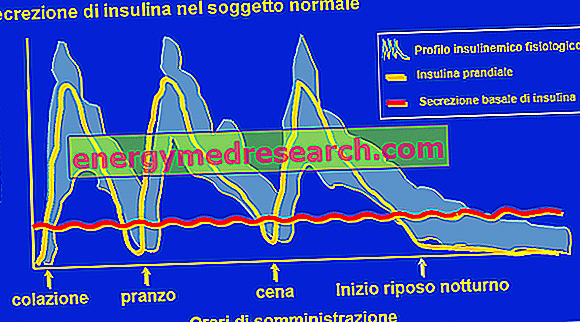Generality
Coxarthrosis, or osteoarthritis of the hip, is a chronic inflammatory condition, characterized by the progressive degeneration of the articular cartilage constituting the hip joint.

The symptomatology related to coxarthrosis includes three stages of gravity: from the first to the third stage, clinical manifestations become more and more intense and debilitating for the patient.
Treatment depends mainly on the severity of the symptomatology: in the presence of mild or moderate symptoms, conservative therapy is indicated; vice versa, in the presence of very serious symptoms, surgical therapy is necessary.
Short anatomical reference: the hip
The hip joint, or more simply the hip, is composed of a skeletal scaffold, to whose support a series of muscles and ligaments contribute.

The hip is one of the largest joints in the human body and belongs to the enarthritis family. In arthrosis, a convex bone portion is housed in a concave bone portion; this structure, together with the ligaments that surround it, enjoys wide mobility.
To reduce interosseous friction and impact shocks, the hip - in the same way as other similar joints - is surrounded by synovial fluid and cartilage. Without it, the bony surfaces would undergo deterioration, due to rubbing and / or friction.
Thanks to the hip, the man is able to assume the standing position, walk, run etc.
What is coxarthrosis?
Coxarthrosis is a chronic inflammatory disease, which affects the hip joint and is characterized by the progressive and inexorable degeneration of the articular cartilage of the aforementioned joint.
Coxartrosis is synonymous with osteoarthritis of the hip.
Arthrosis (or osteoarthritis ) is the most common type of arthritis in humans. In medicine, the term arthritis indicates the presence of an inflammatory state at the level of one or more joints.
Causes
From the pathophysiological point of view, coxarthrosis arises due to the process of degeneration of the articular cartilage that affects the hip and which was discussed in the previous chapter.
In fact, the degeneration of the articular cartilage involves a thinning of the cartilaginous layer, which covers the bony surfaces of the elements constituting the hip.
From the thinning of the cartilaginous layer it derives that the bony surfaces rub together, producing themselves in a completely anomalous phenomenon, which causes inflammation.
IDIOPATHIC COXARTROSE AND SECONDARY COXARTROSIS
Coxarthrosis can be idiopathic and secondary . It is idiopathic, when it arises due to unknown or unrecognizable causes; it is secondary, when it appears following other affections of the hip, such as for example traumas, fractures, articular infections, bone infections, episodes of osteonecrosis and congenital hip diseases (eg, congenital hip dysplasia).
RISK FACTORS
The most important risk factors of coxarthrosis are: advanced age, belonging to the female sex, a past history of joint injuries to the hip, a sedentary lifestyle, obesity / overweight, diabetes and the presence of particular forms of arthritis, such as rheumatoid arthritis or gout.
MONOLATERAL AND BILATERAL COXARTROSIS
Coxarthrosis can be unilateral - that is, affect only one of the two hip joints - or bilateral - that is, hitting both hip joints.
The monolaterality and the bilaterality depend on the elements that favor the degeneration of the articular cartilage.
Symptoms and Complications
The characteristic symptom of coxarthrosis is pain at the level of where the inflamed hip joint takes place and in the immediate vicinity (groin, anterior thigh etc).
Pain more or less accentuated movement and a certain joint stiffness depend on pain.
SYNTOMATOLOGICAL STAGES OF COXARTROSIS
According to the doctors, coxarthrosis is generally divided into three stages:
- First stage. It is the initial and least severe stage of coxarthrosis. In this phase, the patients suffer from periodic pains at the level of where the inflamed hip resides, triggered, more often than not, by a moderate / high intensity physical activity.
First stage coxarthrosis is a somewhat subtle condition, since, with the rest of the lower limb suffering, the painful sensation tends to disappear very quickly and almost completely. This leads those who carry the problem to neglect the symptomatology of the periodic character and not to refer it to a doctor or an expert in the field of osteoarthritis.
- Second stage. It is the intermediate stage of coxarthrosis. In this phase, pain takes on new connotations: first, it is more intense than in the first stage; secondly, it concerns a wider anatomical area, also involving the inguinal area and the anterior part of the thigh; thirdly, it can cause a sense of pressure or burning; finally, as a last resort, it can appear not only during a movement or a physical activity of a certain intensity, but also at rest.
The intensity of the pain, which characterizes the second stage, is such that patients have difficulty performing certain movements with the suffering limb: the painful feeling in place, therefore, affects the articular mobility of the inflamed hip.
- Third stage. It is the final stage of coxarthrosis, the most serious. At this stage, pain becomes a particularly intense, constant (chronic pain) and diffuse sensation. The hip movements are strongly affected, to the point that patients complain of difficulties even during a simple walk, in making the stairs and using the bicycle.
COMPLICATIONS
In general, the complications of coxarthrosis are a consequence of the third symptomatological stage.
In fact, chronic pain and the reduced ability to move the hip negatively affect the quality of life of patients, as they complain of continuous discomfort and have problems moving on foot even for short distances.
The forced sedentariness, to which the carriers of a coxarthrosis in the third stage are forced, causes a progressive atrophy of the muscles of the entire lower limb (calves in particular).
WHEN TO REFER TO THE DOCTOR?
The presence of suspicious pains in one or both hips, especially after a physical activity, is a good reason to contact your doctor, in order to investigate the situation.
It is important to remind readers that the detection of coxarthrosis at an early stage involves a less invasive treatment and a lesser tendency to develop complications.
Diagnosis
In general, the diagnostic procedure that leads to the identification of a coxarthrosis begins with the physical examination and the anamnesis. Therefore, depending on the circumstances, it can proceed with: a series of diagnostic imaging tests (including hip X-rays, hip MRI and hip ultrasound), blood tests and a Arthroscopy for diagnostic purposes.
OBJECTIVE AND ANAMNESIS EXAMINATION
The physical examination is the set of diagnostic maneuvers, carried out by the doctor, to verify the presence or absence, in the patient, of signs indicative of an abnormal condition.
For example, in case of suspected coxarthrosis, one of the classic diagnostic maneuvers consists in testing the patient's hip movements, so as to assess which ones are painful or not.
The anamnesis, on the other hand, is the collection and critical study of symptoms and facts of medical interest, reported by the patient or his family members (NB: family members are involved, above all, when the patient is small).
In the presence of suspected coxarthrosis, the anamnesis can provide a wide range of information, regarding the possible factors that induced the inflammatory process of the hip joint.
EXAMS OF DIAGNOSTICS FOR IMAGES
Imaging tests are a valid tool for assessing the extent of articular cartilage degeneration and the possible involvement of other connective tissues surrounding the hip joint (eg ligaments, synovial membrane, etc.).
DIAGNOSTIC ARTROSCOPY
Arthroscopy for diagnostic purposes is a minimally invasive surgical procedure, which doctors use when previous examinations have been poor in useful information and the situation still presents question marks (for example, the extent of cartilage damage is still uncertain) ).
From a practical point of view, it consists in observing from the inside the painful joint, through an instrument - the so-called arthroscope - equipped with a camera, a light source and a connection to a monitor.
Treatment
Treatment of coxarthrosis depends mainly on the symptomatological stage of the condition.
In fact, in the presence of a coxarthrosis at the first stage or however characterized by a very mild symptomatology, doctors generally opt for a conservative (or non-surgical) type of therapy; on the contrary, in the presence of a coxarthrosis at an advanced stage or in any case characterized by a chronic and severe painful sensation, they normally choose for a surgical type of therapy.
CONSERVATIVE THERAPY
Before proceeding with the description of the conservative treatments, it is good to specify that these therapies represent only a remedy to alleviate the symptoms; therefore, they are not able to limit, let alone to reverse, the damage to the articular cartilage, which will continue inexorably to persist and to deteriorate little by little.
Among the possible conservative treatments, indicated in case of coxarthrosis, are:
- Taking chondroprotectors in the form of food supplements.
- The administration of non-steroidal anti-inflammatory drugs (NSAIDs). In these situations, the most prescribed NSAID is ibuprofen;
- The administration of pain-relieving drugs, which reduce the painful sensation;
- The suspension of all those activities that favor the appearance of pain . There are alternative activities, whose execution does not involve annoyance, malaise, etc .;
- Physiotherapy, for strengthening and lengthening the muscles of the lower limbs, with particular attention to the lower limb to which the inflamed hip belongs;
- Injections of hyaluronic acid .
SURGICAL THERAPY
There are two types of surgical treatment: arthroscopic surgery for remodeling of articular cartilage and hip replacement surgery .
Arthroscopic surgery for the remodeling of articular cartilage is a minimally invasive procedure, which doctors reserve for cases of moderate severity and not responding to conservative treatments.
The hip replacement procedure, on the other hand, is a very invasive and delicate procedure, which doctors choose in case of very severe coxarthrosis that does not respond to any other type of treatment (including arthroscopy).
Prognosis
Coxarthrosis is a chronic disease, with a tendency to continuous deterioration. Therefore, his prognosis can never be positive.
However, it should be emphasized that, today, thanks to the continuous progress of medicine, patients can count on truly effective treatments, even only against the pain symptoms induced by coxarthrosis.



